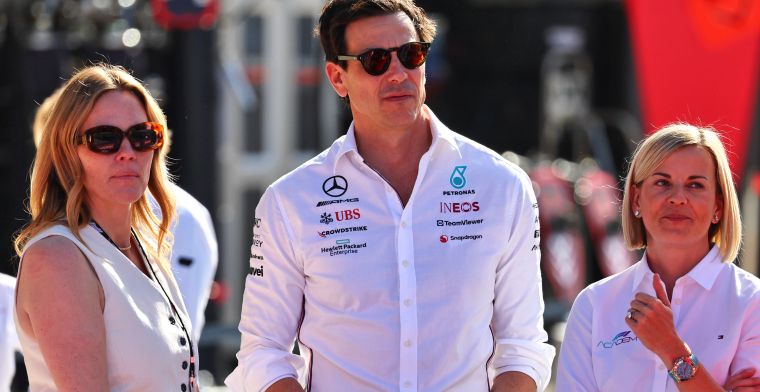General

How a humble F1 magazine provokes half the F1 paddock
Suddenly, there was an announcement from the FIA. There was an investigation into a possible conflict of interest between Toto and Susie Wolff; one CEO and team boss of the Mercedes F1 Team, the other managing director of F1 Academy. There were allegedly fears among F1 teams that their secrets ended up in the Formula One Management boardroom via Toto and then Susie Wolff. The FIA's ethics committee immediately decided to investigate.
It took exactly one day for the FIA's ethics committee to conclude that nothing was really wrong with the Wolff family and that the allegations were completely unfounded. Toto and Susie Wolff were cleared of all blame by the FIA, although their anger had by no means subsided. To this day, they want to know who exactly broke the story about alleged conflicts of interest. Which medium first published it?
Controversial magazine and editor-in-chief
That was BusinessF1 Magazine, which relied on "anonymous sources" who had complained about Wolff. The British magazine is hardly known, if at all, among the general public. Not surprisingly, because it is not on the shelves at the local corner shop. A $260-a-year subscription is required to read the magazine.
The magazine's website has an interesting piece of text: "Facts and attention to details remain the overriding editorial philosophy of BusinessF1. It is reporting without a preconceived agenda of the highest standard, hence the quality of the story telling is consistently high. This is because BusinessF1 writers seek to tell the story behind the story.
"If it’s good, the good is reported but if it is bad, then we don’t shy away from reporting the bad. There is simply no other magazine like it for providing up-to-date honest analysis. People may not always like elements of it but they always respect it because it is truly independent, with no ties to any organisations working within motor sport. The Editor has total authority and autonomy and only answers to his work colleagues."
BusinessF1 now focus on Horner
In any case, the story surrounding the Wolff couple turned out to be false, although the editor-in-chief revealed in the next issue that he still fully supports his article. Tom Rubython appears to be a very controversial journalist to say the least. No other journalist in the UK has faced as many defamation lawsuits as Rubython during his career. Among others, Max Mosley (former president of the FIA) and Bernie Ecclestone (former owner of Formula 1 and, in the grey past, a business partner of Rubython) once took him to court.
It seems plausible that it will not stop there. The ink on the Wolff story had barely dried when BusinessF1 already ventured into the next story: the Christian Horner affair. Where other media outlets exercise discretion, Rubython wrote pages full of the case in the March edition, repeatedly reporting the full name of the alleged female victim. In the world of journalism, this is not done.
Provoking the Formula 1 paddock
In the current issue, BusinessF1 even takes it up a notch: Dozens of pages are devoted to Red Bull's internal problems and again to the Horner case. For instance, there is a large article about the independent lawyer who allegedly investigated the allegations. Small detail: Red Bull strongly claims that this is not the lawyer in question at all. Moreover, the list of factual inaccuracies in this article alone is endless.
Journalists try to check stories from other media as best they can; from the F1 teams, the FIA or Formula 1. "Was in BusinessF1, wasn't it? I'd leave it out, nothing is true", is what you increasingly hear these days, followed by a deep sigh. And so a humble F1 magazine has thus managed to provoke a significant part of the paddock again.



















































